Every year, the ACSM (American College of Sports Medicine) announces its trend predictions for the world of fitness in the upcoming year, based on survey results from over 2,000 clinicians, researchers, and practitioners in the fitness industry (yes, we have been one of the experts surveyed). In October 2024, they announced their top fitness trends for 2025. In this article, we share our thoughts on where the fitness industry might go in 2025.
Emerging Trends Shaping the Future of Fitness
Wearable Fitness Tech
Wearable fitness tech is getting better at tracking recovery and even predicting the workout intensity you need. We expect these measurements to improve significantly in 2025, especially since almost all wearable tech will track HRV, sleep, and heart rate.
Wearable tech will also incorporate AI, which we see being used for real-time adjustments to programming based on recovery and performance data. Although wearable fitness technology will not be perfected in 2025, expect a giant leap in upgrades this year. For this reason, the ACSM ranked wearable tech as the #1 fitness trend for 2025.
AI-Driven Workouts
AI workouts are already being used to create custom strength training plans for individuals. These apps include Freeletics, Future, and Fitbod. Additionally, smart fitness equipment like Peloton (with AI-suggested classes) or Tonal (with strength training feedback) is integrating AI. Using wearable devices and motion-detecting cameras allows AI to monitor form, pace, heart rate, and more.
AI-driven workout apps sometimes provide rewards for working out, such as discounts, virtual reward points, and other incentives. Incentivizing fitness could be a great tool for encouraging people to develop healthy habits in the long term. Even workout apps used by coaches are structured in a game-like way to create excitement around starting and completing workouts.
Virtual and Augmented Reality Workouts
VR workouts, which require VR headsets, use technology to engage users in otherworldly workouts that feel like games. Although these workouts may help some users stay accountable and motivated, using a VR headset might be a little dangerous for strength training with weights or for movements like push-ups, which require the gaze to be directed toward the floor. VR workouts mostly involve boxing movements and other standing exercises.
Futuristic Diets: What’s Next for Nutrition?
Technology advancements, new research, peptides, and AI are all factors that are changing how we’ll eat to optimize nutrition.
Biohacking Your Body
Biohacking the body simply means that individuals are utilizing science, technology, and self-experimentation to optimize their physical and mental health performance. This includes data driven results from wearable technology that is paired with habits that maximize performance. These habits primarily pair eating habits with supplements, sleep optimization (sleep trackers, sound machines, blackout curtains), mindfulness practices, exercise, red light therapy, cold plunges, etc. To some extent, all of us are implementing some sort of biohacking in our lives at any given moment, whether it’s by strength training, taking ashwagandha or mushroom supplements, or maximizing protein intake. However, as technology becomes more mainstream and accurate, biohacking will shape our relationship to health and wellness, especially through our diet, in a more robust way.
Personalized Nutrition Plans Driven by AI and DNA
In 2025 and beyond, advances in genetics, microbiome research, and AI are enabling the early creation of hyper-personalized diets. For example companies like 23andMe and Nutrigenomics already provide customized dietary recommendations based on genetic predispositions. Companies like Viome and ZOE offer gut microbiome analysis to create specific dietary suggestions for their clients. Wearable tech will fine-tune tracking blood glucose levels, nutrient levels, and metabolic responses to produce realtime dietary recommendations with AI.
Companies are producing health drinks and foods that contain nootropics, adaptogens, peptides, probiotics, omega-3’s, and antioxidants to support specific needs such as mental alertness, performance, and recovery. These diets and specialized foods are in their formative years and will become more accessible and popular as time goes on.
Lab-Grown Meats and Sustainable Protein Alternatives
Amid climate change and environmental uncertainty, should you eat meat? Science is advancing to align our food sources with ecological demands, potentially reshaping our relationship with nutrition. Labs are already creating synthetic proteins and lab-grown meats and seafood to reduce our environmental impact. Mushroom-based and other vegan meats are currently mainstream; however, producing meat from stem cells is still in its infancy and available only to limited markets. Something you might see on shelves more frequently in 2025 is edible insect flours and baking mixes. Eating insects like crickets and mealworms provides protein with minimal environmental impact.
2025 Predictions: What Trends Will Rise and What Will Fade?
Fitness Fads That May Die Out by 2025
Fitness influencers can say anything on social media. For that reason, it would be nice for some cringe-worthy fitness fads to die out, but that probably won’t be the case! However, you can prevent these terrible fitness fads from affecting you if you are properly educated. Some of these fads include metabolism-boosting, fat-burning, and fast weight loss diets and workout programs. These programs lack sustainability, and the little results you might see are impossible to maintain. If a program promises fast results through restrictive dieting or excessive cardio—run! It’s not worth your time or money.
We also hope to see a holistic approach to fitness take center stage. This means fitness programs that are sustainable for the long term and follow principles that can be adapted to everyone’s unique lifestyle. It also includes eating a balanced whole foods diet rich in nutrients, carbs, protein, and fats. At its core, health and wellness is about creating long-term sustainable habits and knowing the truth about fad diets.
Technologies and Trends Poised to Dominate the Wellness Industry
In 2025 and beyond, technologies and methods that focus on longevity and recovery are expected to gain popularity. These include cold therapy, sauna use, and red light therapy. People are increasingly investing in products that enable these recovery techniques to be done at home. Peptide therapies, HRT, DSR, PRP, muscle stimulation, shockwave treatments, and IV solutions are also becoming more popular and are starting to be offered in wellness clinics. While these therapies will take more time to become mainstream, they will likely fall under nonsurgical interventions. In general, people are beginning to explore therapies that can be done outside of surgery or standard medications, focusing more on long-term solutions.
A trend that does not rely heavily on technology (aside from weight equipment) but is poised to dominate the fitness industry is strength training. The word is spreading about the diverse and multifaceted benefits of strength training. Particularly with the rise of Ozempic, strength training is crucial for individuals taking the GLP-1 agonist peptide to minimize muscle loss during weight loss. Despite significant advances in technology, hiring a personal trainer remains the most valuable resource to invest in.
Will Biohacking Go Mainstream or Stay Niche?
The technology mentioned above are all therapies that work with the body to heal itself. Right now, most of these therapies are not covered by insurance, and more research needs to be done to understand their potential. However, most people using these therapies are seeing incredible results. So, although biohacking might not be mainstream in 2025, it is certainly headed in that direction.
Biohacking also goes along with wearable tech and other devices that track blood glucose levels, hormones, metabolic rates, etc. to predict personalized fitness and nutrition programs. This kind of tracking will not be that accurate at first, but it’s still becoming a trend. In fact, data-driven training technology was marked at #7 for the ACSM’s 2025 fitness predictions.
Embracing the Future of Fitness & Nutrition
Health and wellness coaching made the ACSM’s 2025 top trends list at #10. However, this profession is evolving due to significant scientific advancements. Coaching is starting to incorporate biohacking techniques, including blood panel testing, HRT, holistic wellness treatments, peptide therapies, and hormone replacement tailored to an individual’s blood panels, alongside nutrition and fitness coaching.
This shift may lead to more MDs taking on wellness coaching roles or wellness coaches collaborating more closely with doctors. Wellness clinics led by physicians are becoming increasingly common, with wellness coaches on staff to assist with various aspects of wellness plans. These new treatments align closely with foundational wellness components like nutrition, exercise, sleep, and stress management. Health Coaches will continue to play an important role in the future.
Technology improvements will shape the way that we relate to fitness in 2025, but the same human factors will remain true. Exercise, movement, adequate sleep, and a whole foods diet is what every body needs. And, ultimately, it’s up to us to make conscious choices around what we put into our bodies and if we make it to the gym. Our fitness goals are in our own hands.
Want to know more of our fitness predictions for 2025? Listen to episode 217 of the Stronger Than Your Boyfriend Podcast: Predictions/Trends/Future of Fitness & Nutrition



